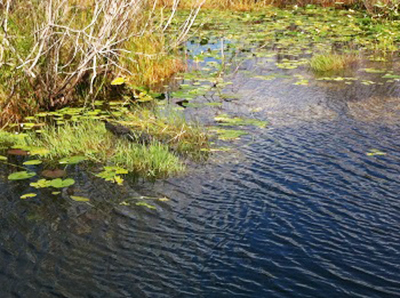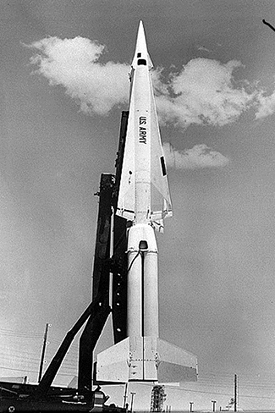
Visitors have own history in Everglades
HOMESTEAD, Fla. — Early on a Saturday morning, the Everglades are teeming with life. The roseate spoonbill wades through the shallow mangroves while it looks for food. A Florida alligator suns itself on the banks of one of the Everglades’ many canals, and an anhinga spreads its wings and takes flight. Everything is bathed in the soft glow of the morning sun.
The park is also busy with human life. Campers emerge from their waterproof tents and begin planning the day’s activities, SUVs roll in, carrying eager park visitors as well as brightly colored kayaks and canoes, and the trails are soon dotted with hikers. By late morning, the park is filled with visitors.
Yet, in order to preserve the park for future generations, visitors need to remind themselves that this was not always so. At the beginning of the 20th century, the Everglades were seen as real estate that was ready to be conquered and developed, but not as a precious resource. This is mainly due to the fact that the potable water in the Everglades has been a driving force in the development of the city of Miami since its incorporation in 1896.
|
At right, a Florida alligator is partly submerged in the shallows of the Everglades. (Photo by Isabel Brador). Below, one of missiles on the Nike missile base in Everglades National Park (Photo courtesy of the National Park Service). |
 |
“The water system of South Florida makes it all work — so far — though few people understand it very well and the media largely ignores it. ‘Free water’ has so long driven Miami’s development,” said Gregory Bush, a history professor who specializes in the history of Miami at the University of Miami.
The “free water” found in the Everglades has not only been an asset to the city, but it has also posed as an obstacle to those who wanted to further urbanize the area surrounding the City of Miami and its metropolitan area — especially those who saw the Everglades as a “waste” of prime real estate.
While the Everglades is now recognized as a unique and important eco-system, the Everglades National Park bares scars which demonstrate how easily natural resources could be lost to human development and what happens when humans fail to recognize the importance of these resources.
“The Urban Development Boundary Line — established decades ago — has been and is habitually threatened by developers who seem oblivious to our environmental needs,” said Bush.
One example of human intervention in the park is the Nike Missile Base site, which was created in the name of national defense during the Cold War and specifically during the Cuban Missile Crisis in 1962.
The missile site included three above ground missile launchers and 22 associated buildings and structures that made up the administration and launch areas. The impact a site like this would have on the environment as well as the disturbance it would cause to surrounding wildlife is enormous.
“It’s crazy, you go out there and you see this huge site in the middle of nowhere. It’s impressive, but also a little eerie. It doesn’t look like it belongs out there in the Everglades…. If those things were still active today I’m not sure we’d be able to enjoy the park in the same way,” said park visitor Mike Rodriguez.
The park has tried to heal this scar. The site has been inactive since the end of the Cold War and tours are available for park guests during the dry season in the months of January through April. The remaining original buildings have been converted into research centers to benefit the park.
 Park officials have even incorporated Ingraham Highway, one of the many highways that were supposed to cut through the eco-system during the early 1900s in order to urbanize the Everglades, into part of the park’s administrative roads system and have restored many of the roads to their original condition.
Park officials have even incorporated Ingraham Highway, one of the many highways that were supposed to cut through the eco-system during the early 1900s in order to urbanize the Everglades, into part of the park’s administrative roads system and have restored many of the roads to their original condition.
“The park does an excellent job of balancing the tourist aspect of the park, the administrative part of managing a national park, and preserving the ecosystem. We want this place to be here and for people to enjoy it as efficiently as possible, but we also want to protect it,” said park volunteer Carmen Ferreiro.
Yet, the ghostly Cold War era missile site surrounded by the natural beauty of the park is a reminder of how closely the outside world and Everglades have come in contact.
Although not all human contact has been detrimental to the environment and wildlife of the park. Gladesmen, men who lived off the Everglades ecosystem, were able to enjoy the Everglades without leaving a destructive path in their wake. Their intimate knowledge of the land also helped researchers and guides better understand the Everglades.
Additionally, sites such as the shell middens, and the fact that the Royal Palm area of the park was once a state park, demonstrate how eco-conscious individuals can have a positive effect on the Everglades ecosystem.
Shell middens, which are man-made mounds of shells, have been shaping the landscape of the Everglades for centuries. Most middens date back to the 16th century, when Calusa Indians dominated the land.
Park visitors can learn that same respect for nature by visiting the park. A visit to the Everglades serves as a reminder as to why it needs to be protected.
“We need to be constantly re-awakened to the role that the natural world plays in sustaining or crippling our lives. Our population growth has greatly impacted the Park and its pristine nature is critical to our survival,” Bush said.
Also, actively visiting the park may be what keeps it future generations from building missile sites and highways rather than preserving the surrounding area.
“I think people coming back and visiting the park year after year are what keep it protected. People won’t protect something they’ve never seen or experienced, so them visiting makes sure the park will be around for a while,” said Ferreiro.
If You Go
- Address: 40001 State Road 9336, Homestead, Fla., 33034.
- Admission: $10 per car or $5 for pedestrians and cyclists.
- Times: Ernest Coe Visitor Center, just west of Florida City and Homestead, open year-round 9 a.m. to 5 p.m., park is open 24 hours.
- Phone: 305-242-7700.
Website: www.nps.gov/ever/index.htm.

Comments are Closed